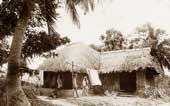 |
From today The Telegraph will be carrying a three-part series on mud houses; their enduring appeal and romance and why such a housing alternative has been overlooked by the government.
The book, Small is Beautiful, made the telling point nearly 40 years ago that Taj Mahal was built when there was neither cement nor steel. India, said the author, did not deserve any foreign aid if Indians cannot plant a tree each and nurse it. Indeed, our experience with the “construction mafia” is such that any attempt at looking at alternative building techniques has run into rough weather.
Do mud houses provide a solution ? It will of course be cheaper and release funds for even more extensive building boom in the countryside. The mud houses will certainly be more homely for a majority of rural folk and use of local labour and material could bring down costs further.
The alternatives, and indeed more expensive techniques to build mud houses, are now available. The more adventurous can now go for sophistication, finishing and a blend of different material, of course at a higher cost, and yet live in fancier mud homes. What’s more, such houses can fulfil individual needs much better — as is evident by examples from South India and Santiniketan.
Mud houses, built for over 4,000 years, are cool in summer and cosy and not as cold in winter as some of the concrete blocks. Architects like Laurie Baker, Chitra Vishwanathan, B.S. Bhushan and M.N. Joglekar have done pioneering work to convince people that mud is a worthy material. They struck a chord in Kerala and Karnataka and have built three-storeyed structures to explode the myth that mud is not strong enough to support structures.
Critics of mud houses believe they are less sturdy and durable, require more regular maintenance, suffer from poor lighting and ventilation besides having the disadvantages of an earthen flooring. Pioneers rubbish the arguments by pointing out that each of these shortcomings can be overcome and that “all problems related to mud housing have been solved”. Even where the soil is not strong enough for mud housing the problem has been overcome by using stabilisers like straw, cow-dung, oil, molasses and lime — all produced or procured at the village level — they say
Therefore, it is a matter of choice and attitude, says Ranchi-based architect, Sudipto Chakraborty, who also points out that Jharkhand is blessed with a soil that is already stronger than in many other states. Chakraborty informs that the National Institute of Rural Development (NIRD) at Hyderabad displays all the 14 types of mud houses built around the country by local people, using indigenous methods and material. The institute in fact has demonstrated the mud houses could withstand heavy, monsoon downpours much better than houses made of cement. While the latter developed leakages and water seeped through, the mud houses remained intact. But there is deep-rooted prejudice against mud houses among urbanites. But while a small number of rich and middle-class people have opted for mud houses, it is in the rural areas where they can usher in a revolution for the homeless.
Locally available materials like timber, bamboo and stone — with sun-dried mud-tiles used for flooring — can improve the quality of these houses considerably, feels Chakraborty. Problems related to raising the height of the houses and spans can be overcome with the help of pre-fabricated blocks, timber and mud-bricks made of mud, mortar and waterproof compounds, he believes.
Mud can be a material that can be used for public construction work like public toilets in rural areas, community halls and even school buildings. Through social forestry, wood, timber and bamboo can be made available in the villages themselves. Lighting these houses, however, will pose problems, feels the architect, who, however, hastens to add that solar energy system can provide an alternative. Light-emitting diodes (LED) also, he says, have not been used properly but have the potential to provide the minimum requirements.
Bimal Kumar Sanga from Ulihatu has lived in a mud house but is determined to build a house made of bricks and cement. Because mud houses, he says, are not secure enough. Criminals can break in easily by either drilling a hole on the wall or by removing a part of the thatched or the tiled roof.
But Sanga is quick to admit that he is not aware of the new techniques which have led to vast improvements in mud houses. Nor has any attempt been made in the state to build up awareness about the techniques, which can improve the homes.
Not much expertise is required to build mud houses, says Niral Ekka of Pokhartoli on the outskirts of Ranchi. But an expert mason is required to handle the alignments, he said. Deo Sharan Bhagat from Dumka added that the techniques are similar in Santhal Pargana but the walls and floorings are given special treatment and plastered with coatings of fine mud and polished with a solution of mud with blackish, reddish or white tinges.
Many of these mud houses have a low-roofed loft known locally as “kotha”, used for both storing and dwelling. “In summer, when I used to sleep in such a ‘kotha’ during afternoons, I found it really cool, compared to the scorching heat outside,” recalled Sharan.
Sunil Kumar, another architect who has worked with mud, feels that a small room or two can be built with as little as Rs 15,000 provided labour cost is excluded and materials are procured locally.
Labour cost, transport cost and the cost of finishing, he points out, can push up the total cost. But, adds Eugene Pandala, an architect, the cost will rarely be higher than 40 per cent of a brick house of same size.
The techniques have been elevated to a different level in Kerala and Karnataka. Srinivasan, an architect in Kerala, inform fellow architects in Jharkhand, has built his own house with mud with lavish interiors made with liberal use of wood and granite. Yet, it cost him Rs 430 per square feet. In other words, if you have Rs 10 lakh to spare, you can live in a lavish, 2,000-square-foot mud house. Any takers ?










